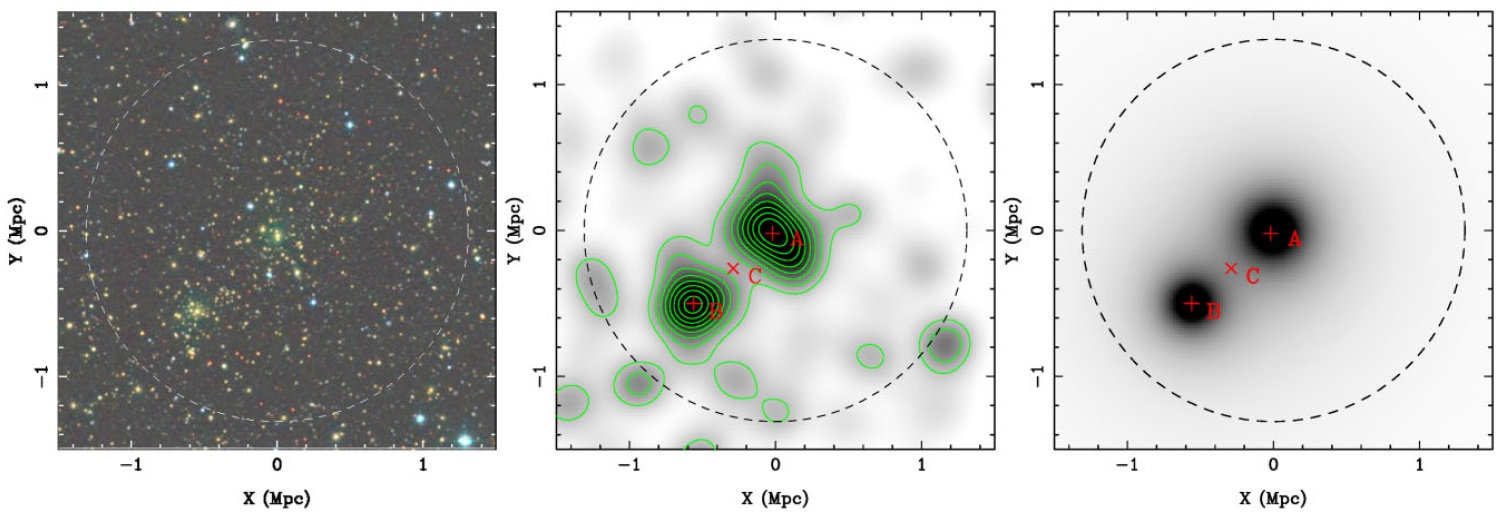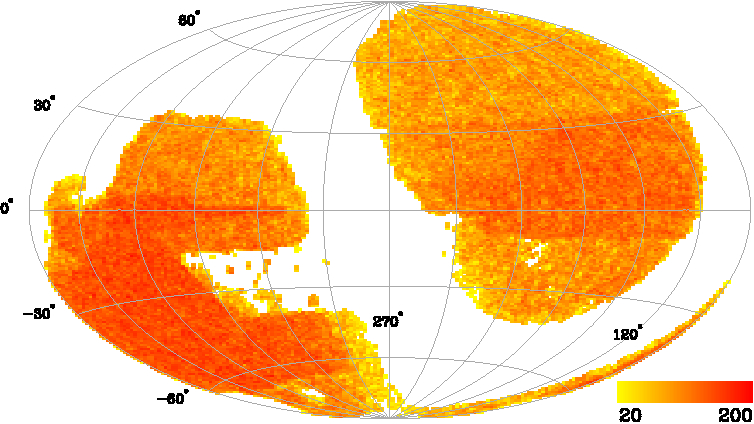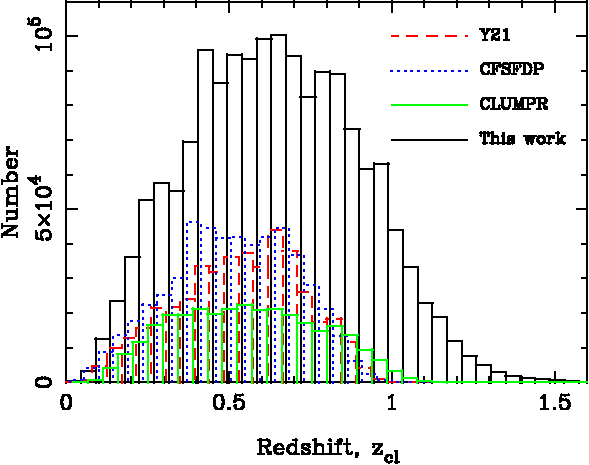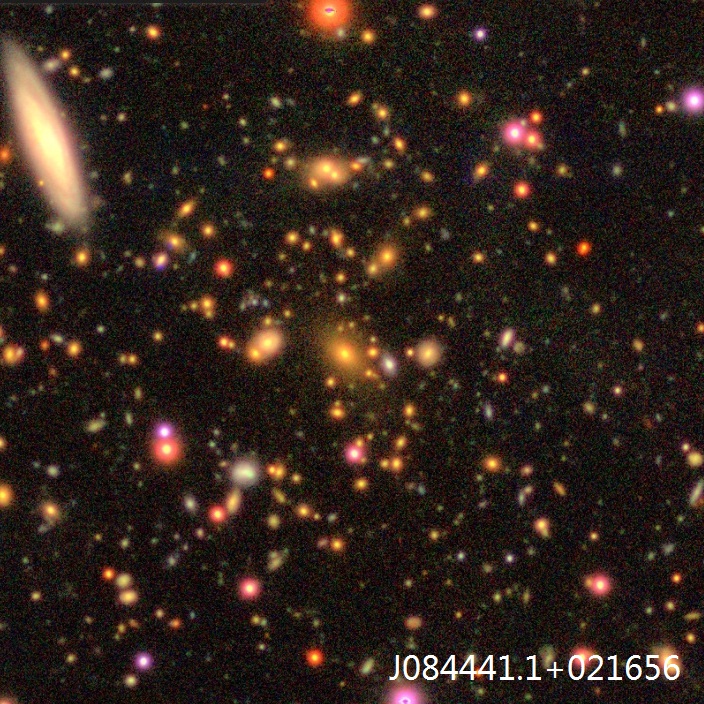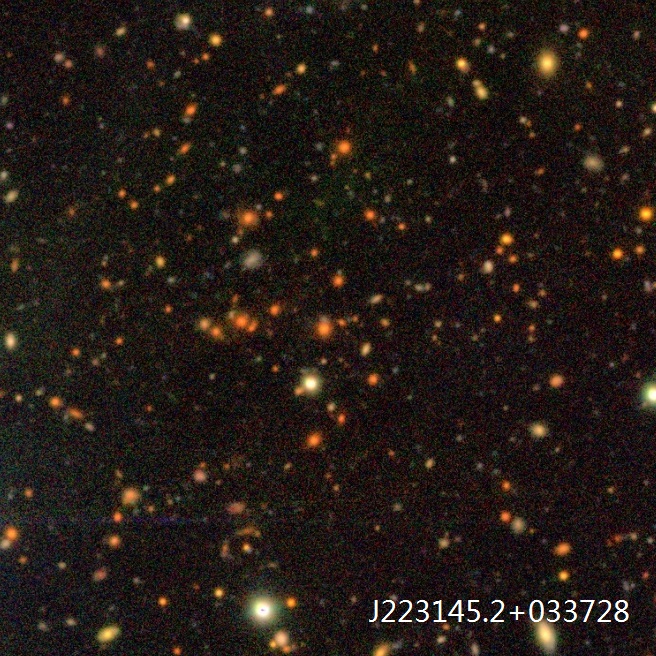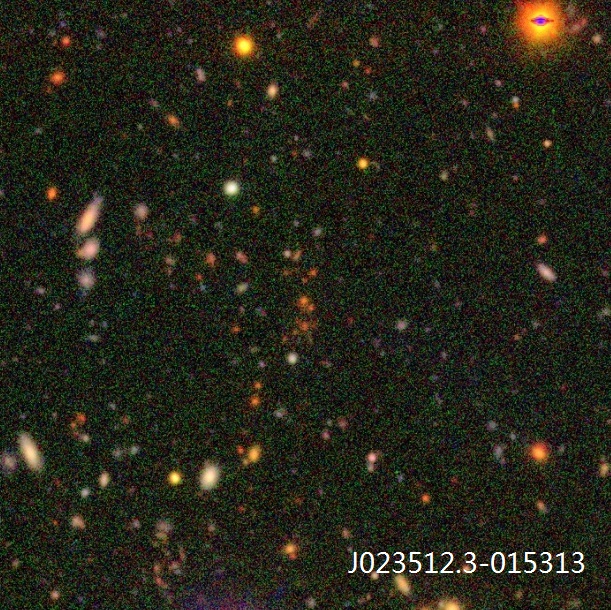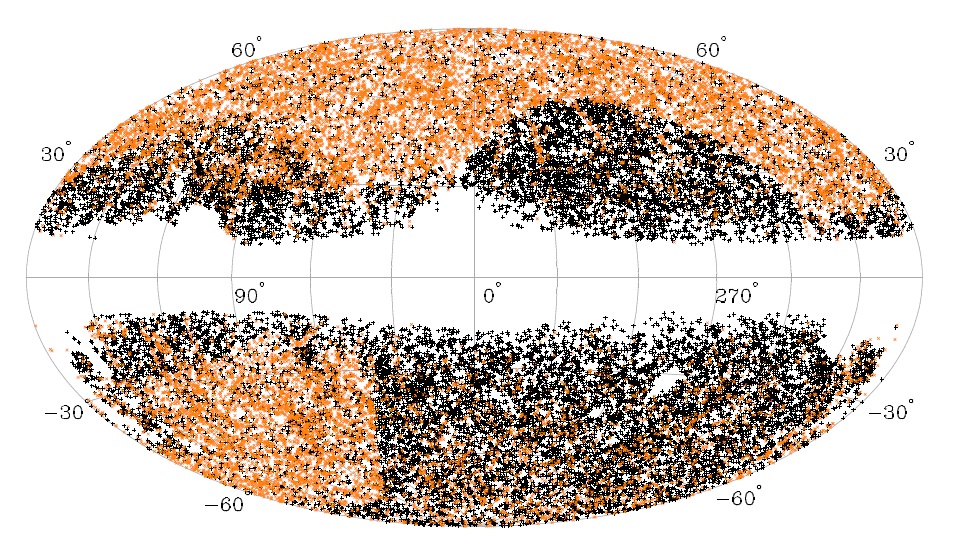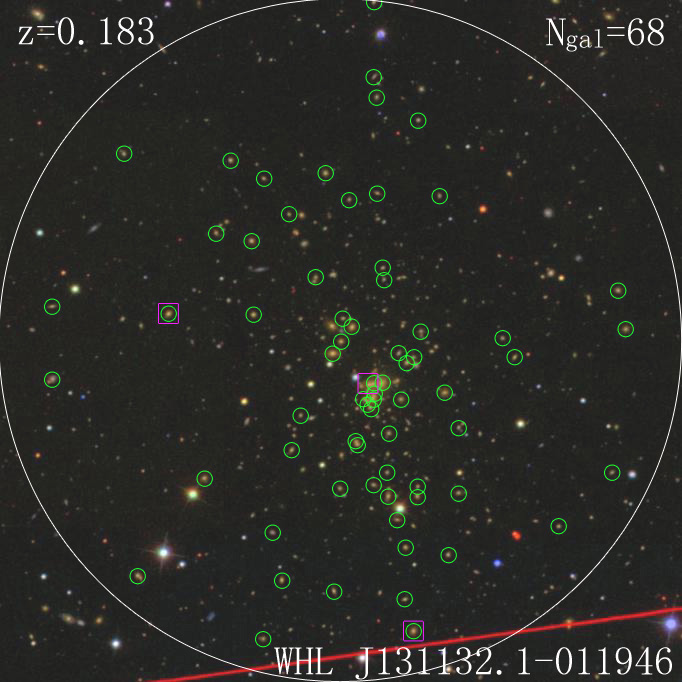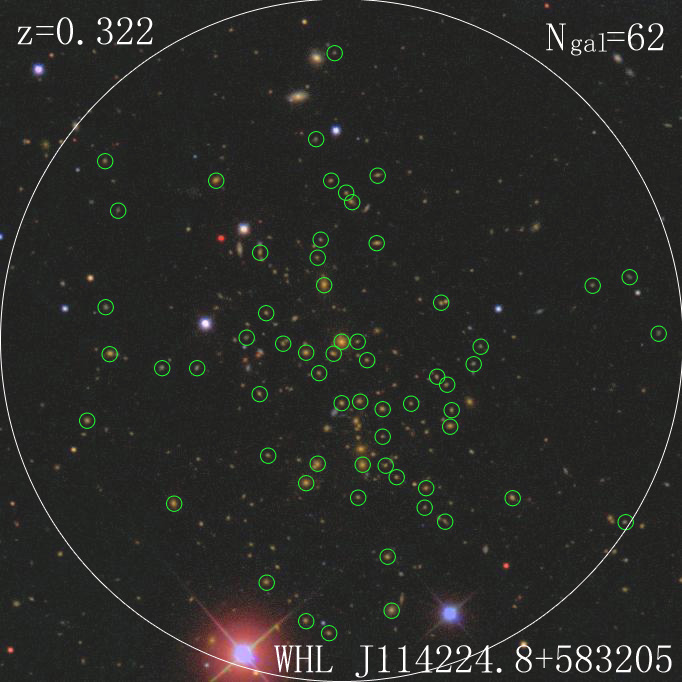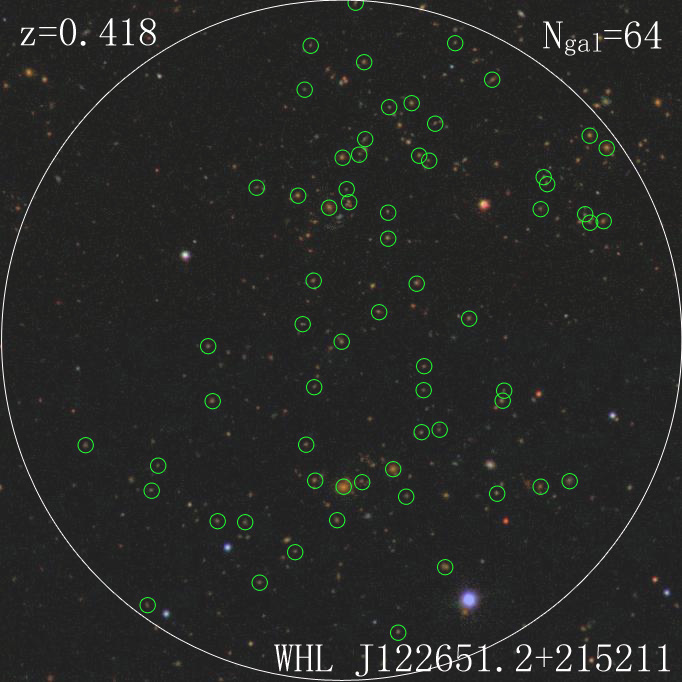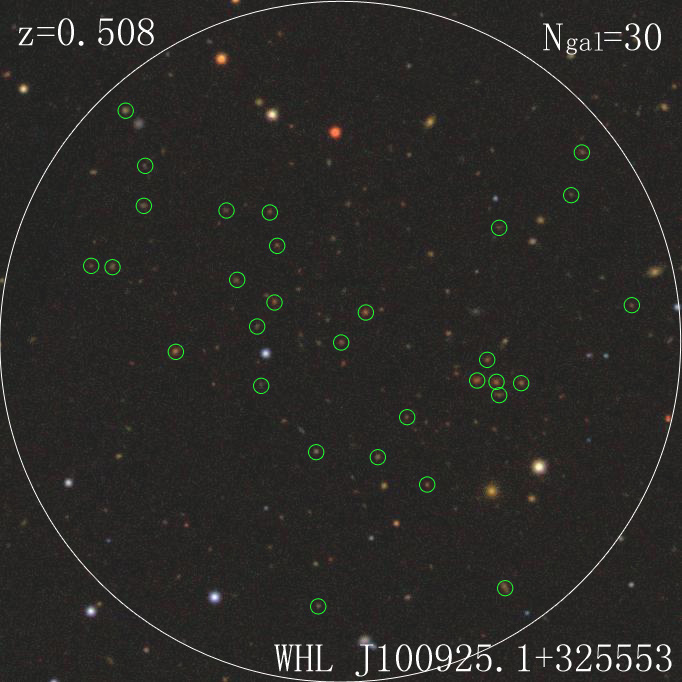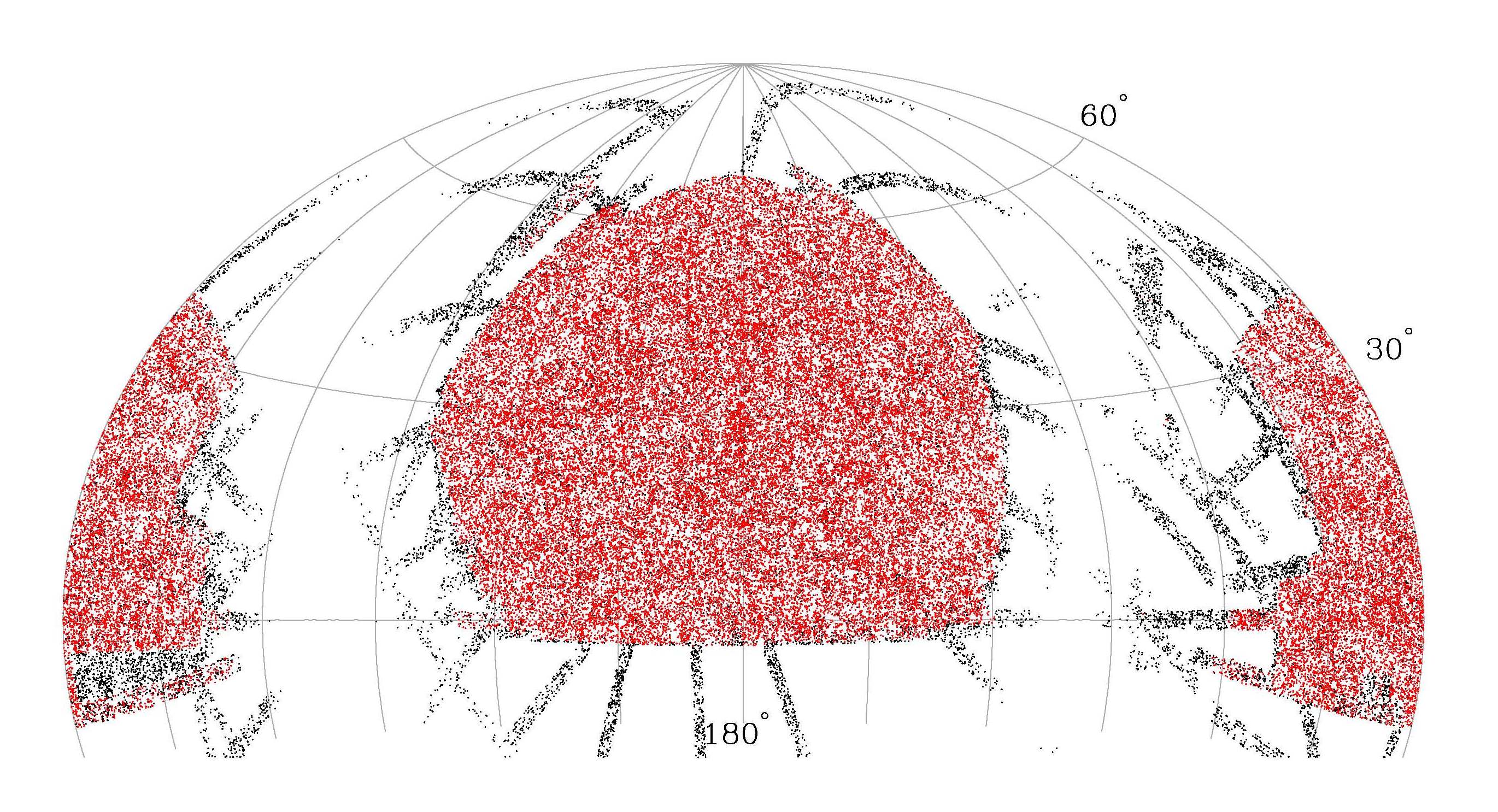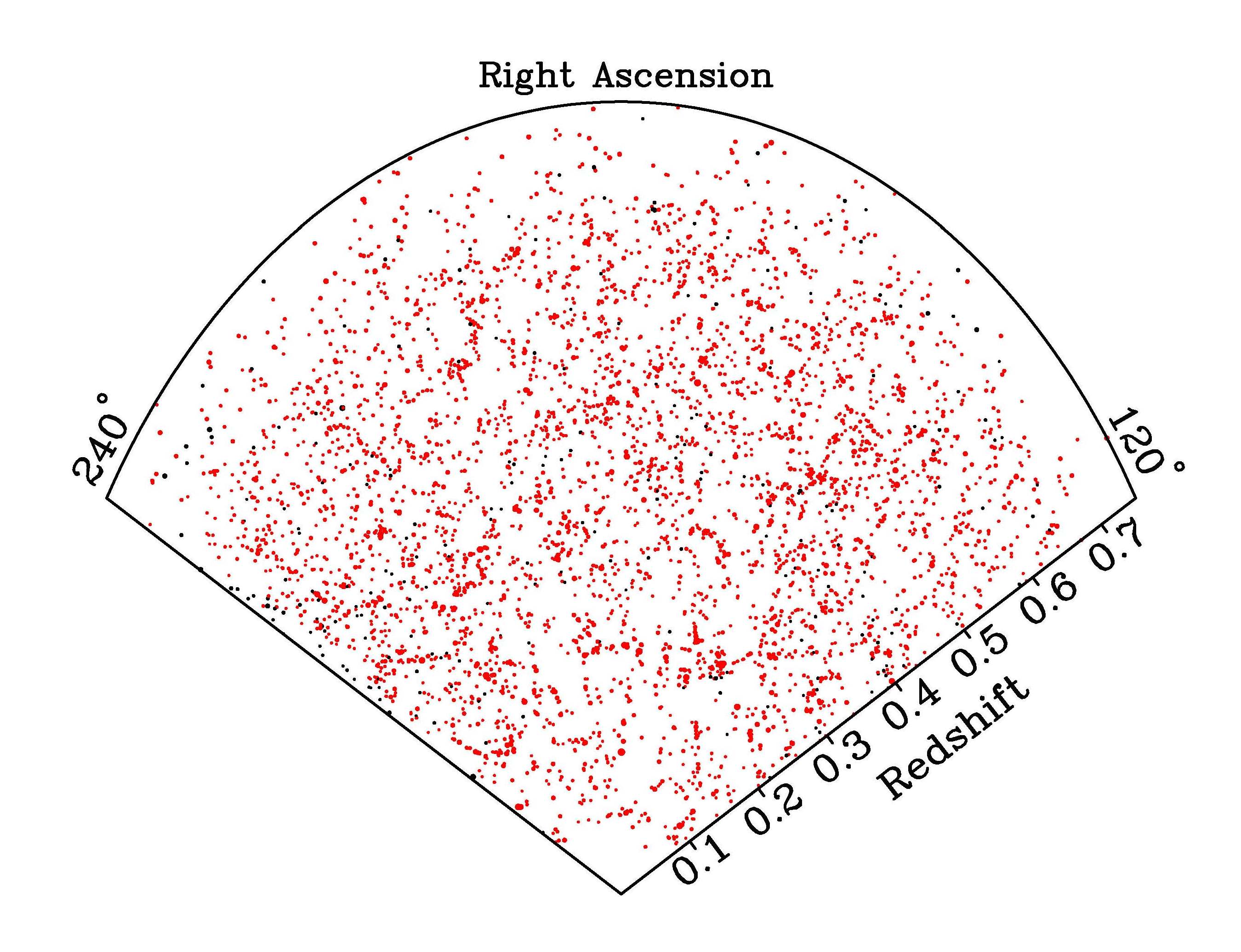(1). the photometric redshifts (we publish about 260 million galaxies with reliable photometric redshifts, i.e. σzp ≤ 2Δz) and stellar masses of galaxies in the DESI Legacy Surveys DR10, listed in the Table 1 in the paper (too large and have to be saved in 13 Declination regions):
table1-p30-p40.tar.gz for the galaxies with 30°<Dec<40°
(2). The 1,581,179 clusters of galaxies identified from DESI Legacy Surveys DR9 and DR10, listed in the
Table2 in the paper;
(3). The 15,864,358 member galaxy candidates of the identified clusters in r500 are given here on web .
WH2022:
Clusters of galaxies up to z=1.5 identified from photometric data of the Dark Energy Survey and unWISE
in: Wen, Z. L., & Han, J. L. 2022, MNRAS, 513, 3946
Using the algorithms in WH21, we estimated photometric redshifts for 105 million galaxies and identified 151,244 clusters of galaxies from the Dark Energy Survey and unWISE, among which 76,826 clusters are newly identified and 30,477 clusters have a redshift z>1.0. We get the redshifts for 45 X-ray clusters and 56 SZ clusters. More than 95% SZ clusters in the sky region have counterparts in our catalogue. We find multiple optical clusters in the line of sight towards about 15% of SZ clusters.
Below are the on-line data in this work (see the description in Readme_DESunWISE):
galaxy_DESunWISE.dat.gz for 105 million galaxies.
cluster_DESunWISE.dat.gz for 151,244 clusters of galaxies.
member_DESunWISE.dat.gz for 2,454,302 member galaxy candidates.
WH2021:
Photometric redshifts for galaxies in the Subaru Hyper Suprime-Cam and
unWISE and a catalogue of identified clusters of galaxies
in: Wen, Z. L., & Han, J. L. 2021, MNRAS, 500, 1003
To identify the clusters at high redshifts, we first presented a catalogue of photometric redshifts for 14.68 million massive galaxies derived from the 7-band photometric data of HSC-SSP and the WISE (unWISE catalogue). The stellar masses of galaxies are derived from the infrared magnitude and calibrated by using the COSMOS data. From such a large dataset, we then identified a sample of 21,661 clusters of galaxies in the redshift range of 0.1<z<2.0, among which 5537 clusters have redshifts z>1 and 642 clusters have z>1.5. Our work significantly enlarges the number of clusters at redshifts of z>1. Here, we publish the data of 14.68 million HSC-SSP×unWISE galaxies (7-band magnitudes, photometric redshifts and stellar masses), 21,661 identified clusters and the 372,974 member galaxy candidates.
HSC-SSP composite (riz) colour images of three clusters identified from the HSC-SSP×unWISE data at z=0.6579 (left), 0.9986 (middle) and 1.4594 (right), respectively. The images have a scale of 1 Mpc×1 Mpc.
On-line data:
Below are the photometric redshift data of 14.68 million HSC-SSP×unWISE galaxies in eight separated regions (see the description in Readme):
In addition, here are the data of 21,661 identified clusters and their member candidates of 372,974 galaxies from the HSC-SSP×unWISE data.
WHY2018:
A catalog of clusters of galaxies from all sky surveys of 2MASS, WISE and SuperCOSMOS
Wen, Z. L., Han, J. L., & Yang, F. 2018, MNRAS, 475, 343
In the region outside of the SDSS, only a few thousand clusters have been previously found. We identified 47,600 clusters of galaxies in the redshift range of 0.02<z<0.4 from photometric data of Two Micron All Sky Survey (2MASS), WISE and SuperCOSMOS, among which 26,125 clusters are recognized for the first time and mostly in the sky outside the SDSS area. Our work significantly enlarges the number of clusters in the region outside of the SDSS.
Sky distribution of 47,600 identified galaxy clusters in the Galactic
coordinates. The orange × stands for 21,475 previously known
clusters and black + for 26,125 newly identified clusters.
On-line data are published with the publication.
WH18; WH15; WHL12; WHL09:
Catalogs of clusters of galaxies identified from SDSS
published in papers:
WH18: Wen, Z. L., & Han, J. L. 2018, MNRAS, 481, 4158,
WH15: Wen, Z. L., & Han, J. L. 2015, ApJ, 807, 178,
WHL12: Wen, Z. L., Han, J. L., & Liu, F. S. 2012, ApJS, 199, 34,
WHL09: Wen, Z. L., Han, J. L., & Liu, F. S. 2009, ApJS, 193, 197,
WHL09 Erratum: Wen, Z. L., Han, J. L., & Liu, F. S. 2010, ApJS, 187, 272,
We published four papers on identification of galaxy clusters from the SDSS data. Before our works, most of known clusters have a low redshift. In 2009, we developed an alogrithm to identify clusters by using photometric redshifts of galaxies and got 39,668 clusters (WHL09) in the redshift range of 0.05<z<0.6 from the SDSS data release 6 (DR6). In 2012, we updated the algorithm and identified 132,684 clusters in the redshift range of 0.05<z<0.8 from the SDSS DR8 covering 14,000 square degree (WHL12). In 2015, we compiled a sample of 1191 clusters at 0.05<z<0.75 with known masses to calibrate a new redshift-independent richness. By including spectroscopic redshifts of the SDSS DR12, we updated the WHL12 cluster catalog and identified
additional 25,419 new clusters, mostly at higher redshifts. The combined WHL12 catalog contains 158,103 clusters, which is currently the largest cluster catalog (WH15). In 2018, we combined the SDSS photometric and spectroscopic data with the WISE data, and identified 1959 massive clusters in the redshift range of
0.7<z<1.0 (WH18).
Composite (gri) colour images of six clusters identified from SDSS DR6
data The big circle on the image has a radius of 1 Mpc from the
cluster center. The small circles indicate member candidates we
obtain. The squares indicate member galaxies obtained from SDSS
spectroscopic data.
Sky coverage of WH15 clusters identified from SDSS data (left) and
their radial distribution in a slice 0°<Dec<5°
(right). The red points are clusters with spectroscopic redshifts.
On-line data are published with the papers.
WH2011: clusters in deep fields
Clusters identified from CFHT, COSMOS and SWIRE fields
in: Wen, Z. L., & Han, J. L. 2011, ApJ, 734, 68
Based on our cluster identification algorithm, we identified 631, 202, 187 and 737 clusters in the redshift range of 0.1<z<1.6 from public
data in the CFHT-wide, CFHT-deep, COSMOS and SWIRE fields. Merging these clusters samples gives 1644 clusters in the four survey fields, of which 1088 are newly identified.
Redshift distributions of identified clusters. The grey histograms
show the distributions of previously known clusters.
On-line data are published with the paper.

